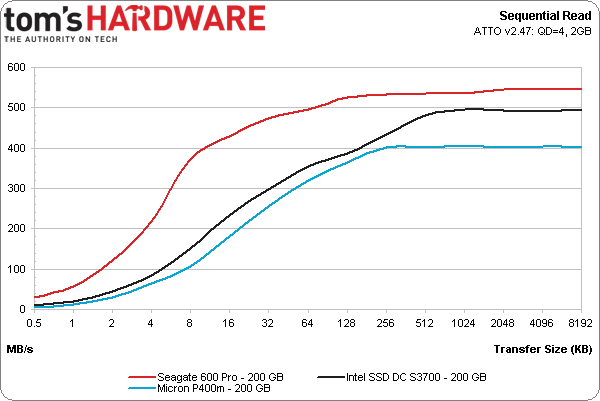Seagate 600 Pro-Series 200 GB SSD Review: For The Enterprise
After years of halfhearted attempts to join the solid-state storage market, Seagate is finally ready to reinvent itself with a new family of SSDs. The first one we're looking at is the enterprise-class 600 Pro. Does this 200 GB drive impress our team?
Results: Sequential Performance
When it comes to sequential read and write performance, the 600 Pro wins at 200 GB. It beats the SSD DC S3700 by 60 MB/s and the P400m by twice that.
Seagate extracts its maximum sequential performance at the 200 GB capacity point, whereas Intel requires that you buy the 400 GB version to match the 600 Pro. This is a pain for enterprise customers, since the larger (more expensive) models are often the only way to get peak numbers. What we're seeing here is Seagate allowing its customers to get great performance at more affordable capacity points.
Get Tom's Hardware's best news and in-depth reviews, straight to your inbox.
Current page: Results: Sequential Performance
Prev Page Results: Enterprise Workload Performance Next Page Results: Enterprise Video Streaming Performance
